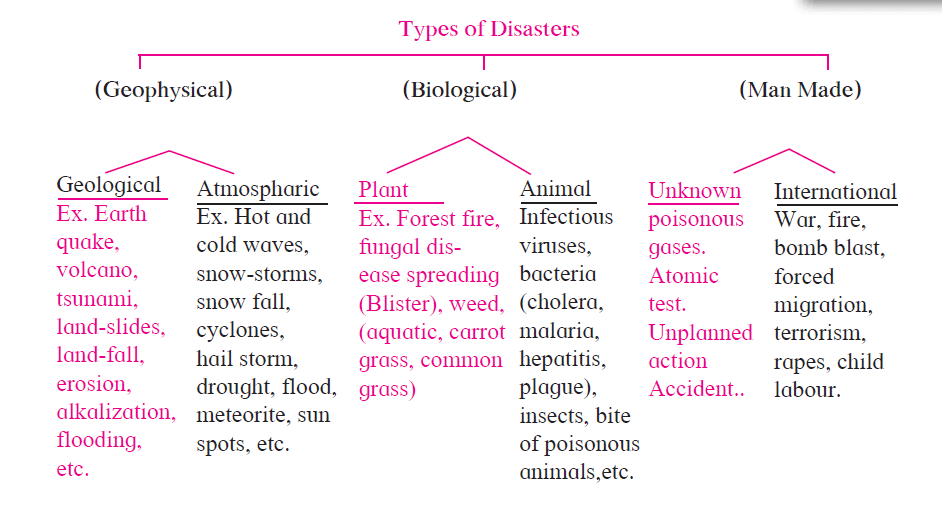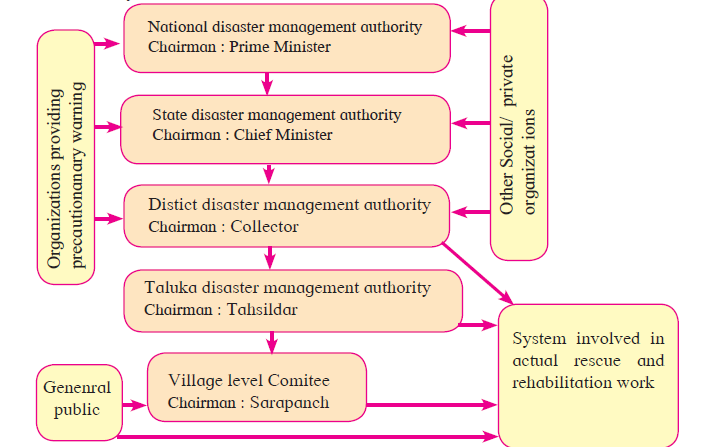Need help? We're here to assist you!
Thank You for Enquiry, we will contact you soon!
Close
The Class 10 is an important year in a student’s life and Maharashtra State Board Science 2 is one of the subjects that require dedication, hard work, and practice. It’s a subject where you can score well if you are well-versed with the concepts, remember the important formulas and solving methods, and have done an ample amount of practice. Worry not! Home Revise is here to make your Class 10 journey even easier. It’s essential for students to have the right study material and notes to prepare for their board examinations, and through Home Revise, you can cover all the fundamental topics in the subject and the complete Maharashtra State Board Class 10 Science 2 Book syllabus.

1. What is a disaster?
Answer: Several dangerous events that take place many times in the environment are called disasters. A few of the main natural disasters are floods, wet and dry famine, cyclones, earthquakes, volcanoes and so on. These are ‘all of a sudden’ troubles to mankind. These events cause sudden changes in the environment, thereby causing damage to it.
2. How is disaster classified? Draw the chart depicting classification of disasters.
Answer: Disaster can be classified into catastrophic disasters. Examples are Cyclones in Odisha, catastrophic earthquakes of Gujarat and Latur, frequently buzzing cyclones in coastal Andhra Pradesh, etc., which resulted in total chaos, huge loss of life and property in respective regions. Nevertheless, despite all these, life has always returned to normal within a short span of time. However, there are disasters that make an impact for a long duration. After effects of these disasters are either severe or severity increases with time. Examples include Famine, various problems of crop, strikes of workers, rising levels of the oceans, desertification and so on.

3. What are some effects of disaster?
Answer: Floods cause collapse of bridges, flooding of coastal villages, shortage of food, while collapsing of houses, developing cracks in land are some effects of earthquakes. Even disasters such as forest fires adversely affect the environment. Disasters affect the economy of the nation. For example, if any port is destroyed, there are long-lasting effects on the economy because of the huge expenses involved in reconstructing it. Disasters also leave an effect on social leadership. If the leadership is not strong enough, citizens could be confused and this in turn could affect their participation in the rescue and rehabilitation activities. Administrative issues could arise during disasters and if local governing bodies are affected, the related departments would not be able to respond to the disaster problems properly. Since all the concerned departments are affected by disasters, the entire system is liable to collapse.
4. Which are the six points that determine the nature and scope of the disaster?
Answer: Taking into consideration the scope of the disaster, the important facts are thought over, as follows:
1. Pre-disaster phase
2. Warning phase
3. Emergency phase
4. Rehabilitation phase
5. Recovery phase
6. Reconstruction phase
5. Depending on the nature and scope of disaster, which are the three aspects of disaster important for common citizens?
Answer: Taking into consideration the nature and scope of disaster, only three aspects of disasters are important for common citizens. They are 1) Phase of emergency 2) transitional phase and 3) Reconstruction phase.
6. What are the objectives of disaster management?
Answer: Given here are some objectives for disaster management:
1. Dispose human life suffered by human beings during the calamity and the release of the people
2. Supply essential commodities of the people to reduce the effect of the disaster
3. Restore human life in the region by creating reconciliation in disaster
4. Rehabilitate disaster victims
5. Consider a protective measure in disasters, such disaster will not reach in future and take care to reduce their intensity
7. What are the main aspects of the disaster management cycle?
Answer: The main aspects of the disaster management cycle are given below :
Step 1- Preparation: Plan is prepared to minimize the destruction in any disaster, if it occurs.
Step 2- Redemption: Plan for minimizing the damage to the society and the country
Step 3- Preparedness: A plan is chalked out to get a quick response from public and administration
Step 4-Impact of disaster: Intensity of various aspects of disaster and disaster management is reviewed
Step 5-Response: Response to the disaster is to be given immediately after the incident. This factor is followed by the disaster strike in this cycle
Step 6- Resurgence: An important link between emergency measures and national progress, it is a stage used for the welfare and rehabilitation of the nation
Restoration: an important link between measures after disaster and national development, it is useful for progress of nation and rehabilitation
8. Draw a flow chart indicating the structure of disaster management authority.
Answer:
